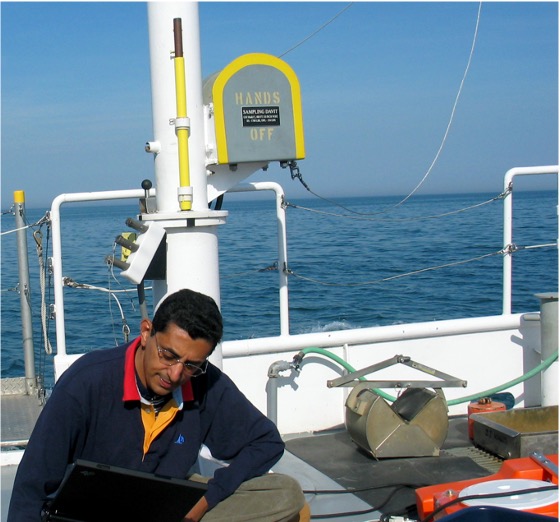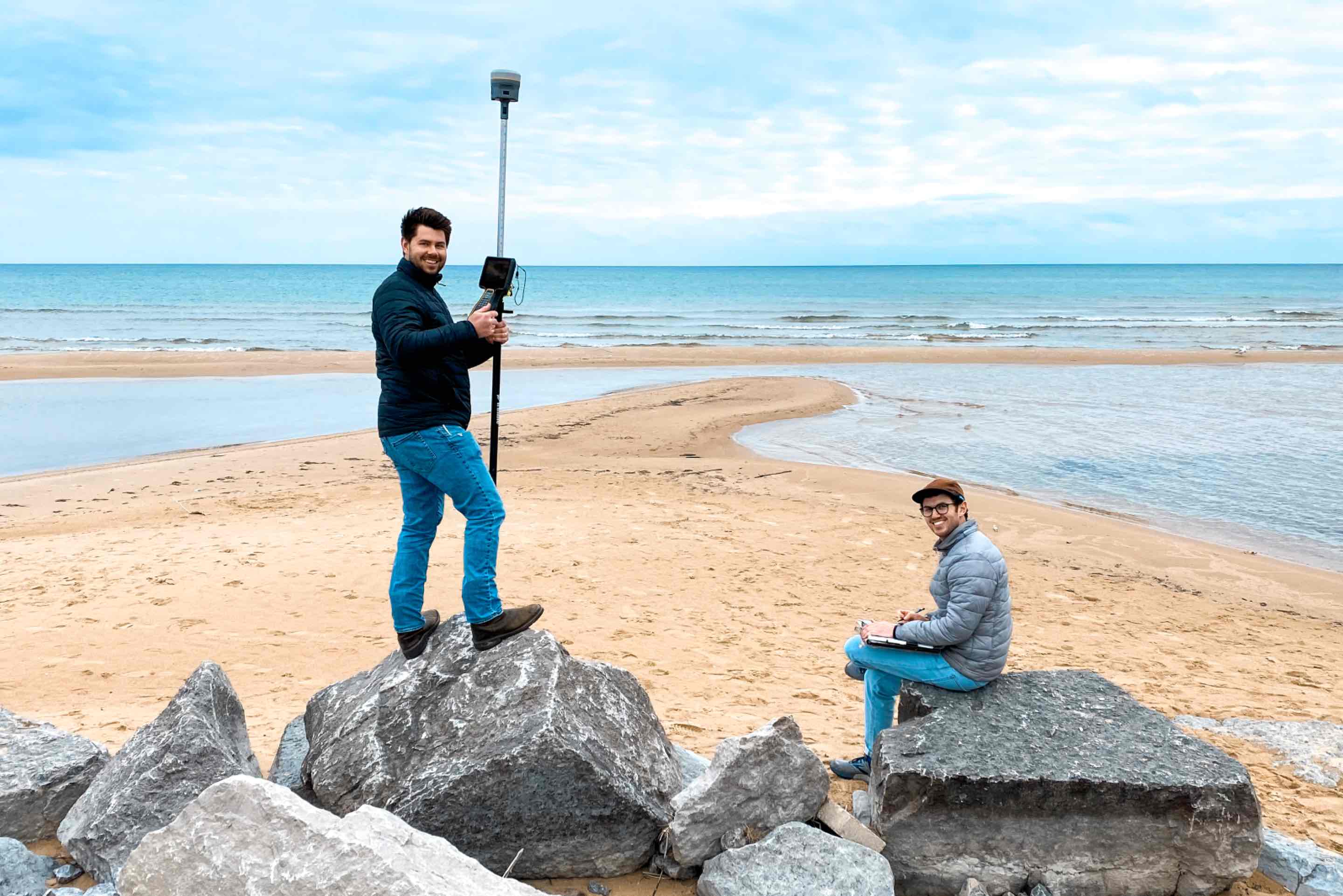Nobody wants a day at the beach to turn into a trip to the doctor. But in Michigan, water pollution can pose serious health risks, especially when swimmers aren’t warned in time. That’s why Phanikumar Mantha, a professor in the Department of Civil and Environmental Engineering, is using science and technology to help.

Phanikumar Mantha, professor in the Department of Civil and Environmental Engineering, examines how the quality of coastal water within the Great Lakes is affected by the circulation of contaminants. Courtesy photo
Mantha is working on ways to monitor beach water quality in real time using sensors and computer models, including machine learning, at beaches around the Great Lakes. These tools help determine when water is unsafe for swimming due to pollution. The research team has successfully tested this approach on several Chicago beaches.
“When people go to swim at a beach on a beautiful day, the last thing they think about is getting sick from contaminated water,” Mantha says. “We’re working with sensors in the water and along coastlines that can upload data in real time for models to generate recommendations on whether a beach should remain open or closed.”
Funding from the National Oceanic and Atmospheric Administration, U.S. Army Corps of Engineers and the U.S. Geological Survey has allowed Mantha to carry out this research.
As changes in climate and population growth put more pressure on our water resources, the tools and knowledge created by researchers like Mantha are more important than ever.
Read more from AgBioResearch.
Protecting Michigan’s coastlines from erosion
Water levels in the Great Lakes are always changing, and that can lead to serious erosion along Michigan’s coastline. But figuring out how these levels will change in the future is tough. That’s why MSU researcher Ethan Theuerkauf is studying how coastlines are affected by waves, storms and ice, and what communities can do to protect their shores.

Assistant Professor Ethan Theuerkauf, a coastal geomorphologist, and former master’s student Lucas Rabins survey erosion caused by high water levels at Tawas State Park on Lake Huron. Photo by Erin Bunting
“Changing lake levels are difficult to predict,” says Theuerkauf, assistant professor of geography. “The one thing that is really challenging about the Great Lakes is being able to predict what is going to happen five or 10 years in the future.”
With help from the National Science Foundation, Theuerkauf’s team created a first-of-its-kind program called the Interdisciplinary Citizen-based Coastal REmote Sensing for Adaptive Management, or IC-CREAM.
This program trains local residents along the coastlines of Lake Michigan and Lake Huron to fly drones and capture images of beaches before and after storms. These images are turned into digital maps that show how much erosion has happened over time. This “citizen science” helps coastal towns monitor their changing shorelines.
In places like Chikaming Township, MSU’s data showed that banning seawalls and other “hard armoring” methods actually helped beaches recover. That’s important because protecting the coast helps shield homes, businesses and ecosystems.
“The Great Lakes are unique,” says Emily Kirkpatrick, the Michigan Coastal Management Program’s coastal hazards coordinator. “We want to understand all the factors involved in coastal erosion and beach recovery, and to be able to communicate that information to the public and local decision makers.”
Theuerkauf’s team also works with state and federal agencies and uses data from weather satellites and lake sensors. They’re now studying whether ice that forms on the shore protects beaches or causes more damage.
Their goal? To help Michigan communities make smarter choices that protect coastlines now and for the future.
Read more on MSUToday.
Whether you’re enjoying a day at the beach or relying on clean drinking water to keep your family healthy, the work of MSU researchers is helping protect what matters most. Continued federal investment in MSU research ensures stronger safeguards for drinking water, smarter responses to a changing climate and healthier futures for communities across Michigan and the nation.
For generations, Spartans have been changing the world through research. Federal funding helps power many of the discoveries that improve lives and keep America at the forefront of innovation and competitiveness. From lifesaving cancer treatments to solutions that advance technology, agriculture, energy and more, MSU researchers work every day to shape a better future for the people of Michigan and beyond. Learn more about MSU’s research impact powered by partnership with the federal government.





